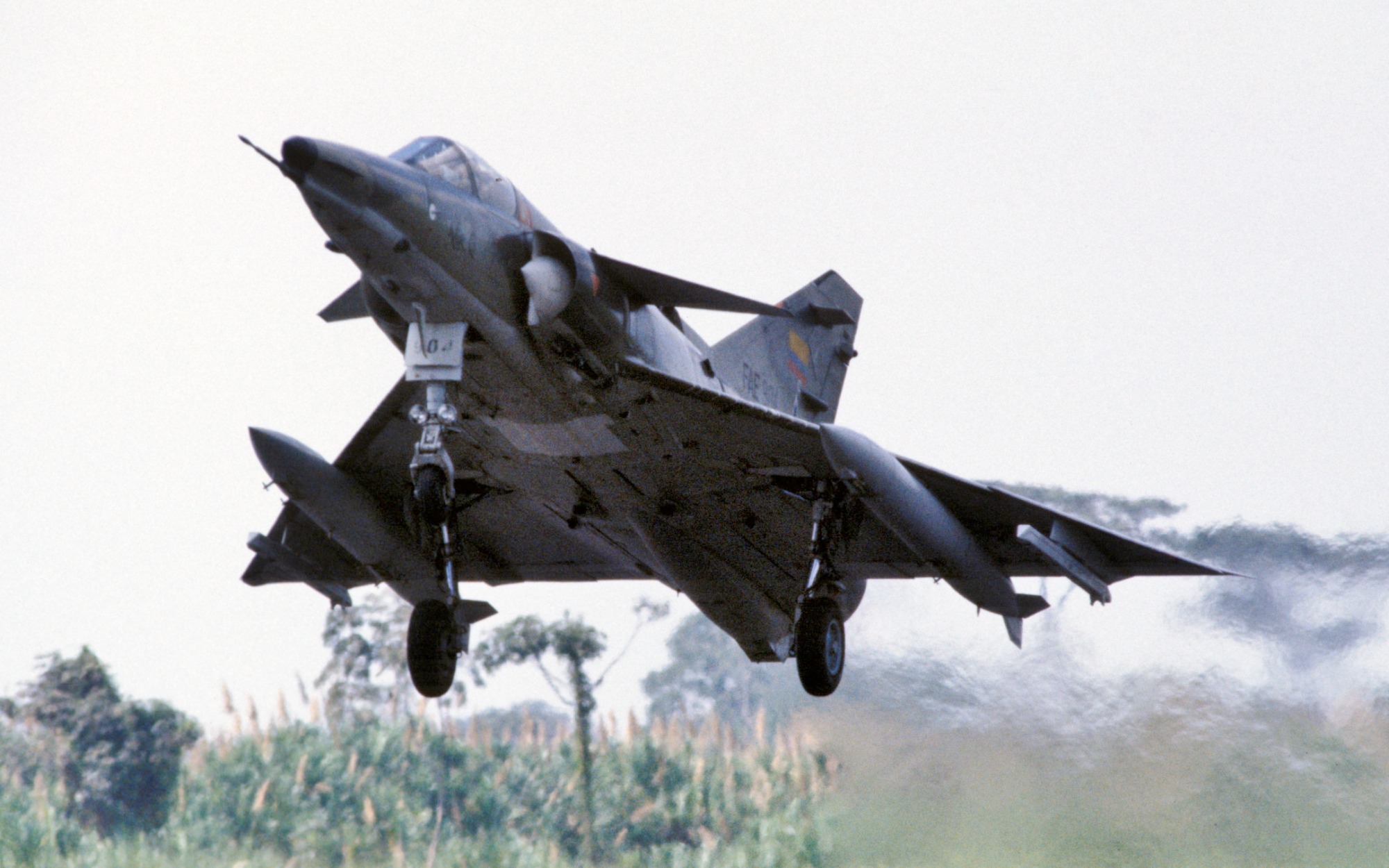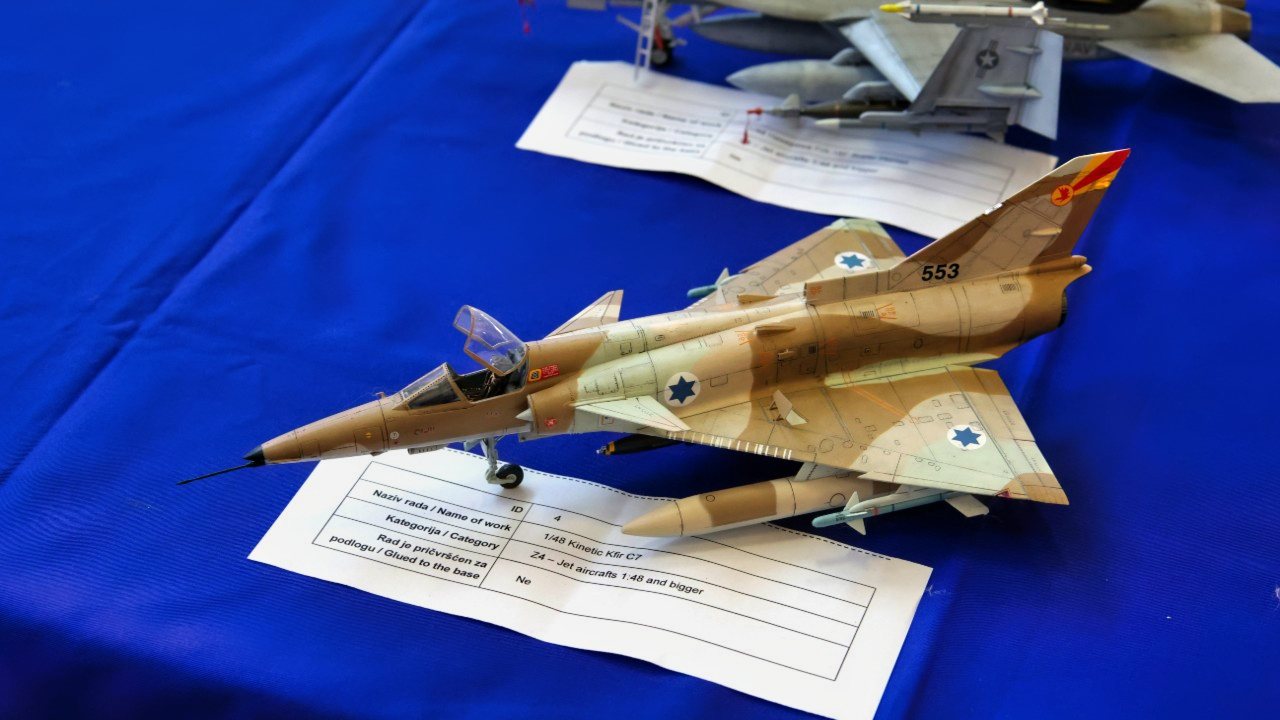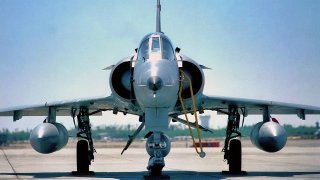Israel’s Kfir Fighter Is One Truly Terrifying Weapon of War
The Israeli Air Force's Kfir combat aircraft is a domestically developed fighter derived from the French Dassault Mirage 5. After France imposed an arms embargo in the late 1960s, Israel reverse-engineered the Mirage to create the Nesher and later improved it to develop the Kfir.
What You Need to Know: The Israeli Air Force's Kfir combat aircraft is a domestically developed fighter derived from the French Dassault Mirage 5. After France imposed an arms embargo in the late 1960s, Israel reverse-engineered the Mirage to create the Nesher and later improved it to develop the Kfir.

-Equipped with the American-made General Electric J79 turbojet engine, the Kfir offered enhanced speed and performance.
-Entering service in the mid-1970s, it was initially Israel's main air superiority fighter until the arrival of the American F-15 Eagle. The Kfir saw combat in Lebanon and was eventually retired by the late 1990s, though it remains in use by countries like Ecuador, Sri Lanka, and Colombia.
Kfir Fighter Jet: Israel's Homegrown Answer to the Mirage 5
The Israeli Air Force’s Kfir combat aircraft was derived from the French-designed Dassault Mirage 5. In the immediate years following its founding, the Jewish state relied heavily on the French platform. In fact, Israel was perhaps the most prolific operator of the Mirage III outside of the French Air Force. This robust aircraft contributed to Israel’s victory against Jordan, Egypt and Syria during the Six Day War of 1967.
The platform also earned its combat-proven service record for its role in the 1973 Yom Kippur War. France and Israel shared close relations around this period and the Mirage IIIC specifically was tailored to fulfil the distinct defense needs of the Jewish state.
While the fighter was the mainstay of the IAF for many years, Israeli officials sought out a longer-range platform for ground-attack missions. The IAI Kfir would satisfy this need.
An overview of the Kfir:
Until the arrival of the American-made Douglas A-4 Skyhawk and McDonnell Douglas F-4 Phantom II, the IAF depended heavily on the Mirage IICJ through the 1960’s.
Notably, this platform represented the first Mach-2.0 (times the speed of sound) airframe procured by Israel at the time. Israeli officials soon prompted French manufacturer Dassault to begin designing a subsequent Mirage 5 variant. As a modified version of the Mirage IIIC, the new platform retained many similarities.
However, the avionics positioned behind the cockpit in the earlier model were removed in the latter, which resulted in increased fuel capacity and reduced maintenance costs. In other words, the Mirage 5 was essentially a ground-attack version of the Mirage III.
By the end of the decade, Dassault had completed the construction of 50 Mirage 5 airframes purchased by the IAF. However, the Jewish state did not receive this delivery after France imposed an arms embargo on the country.
Israeli engineers rectified this gap in capability by producing its own unlicensed copy of the Mirage 5- the Nesher- equipped with technical specifications of the platform gathered by Israeli spies.
In an effort to produce a more formidable variant of the Nesher, the Kfir program was born. Around this time, the adversarial neighbors surrounding Israel were becoming more and more equipped with advanced Soviet-designed platforms.
Concerned that the Mirage airframes already in the IAF’s arsenal would not hold up against these increasingly sophisticated platforms, the IAF needed a superior jet. Israeli engineers weighed incorporating two different engines into the new Kfir airframe- the General Electric J79 turbojet and the Rolls-Royce Spey turbo-fan.
Since the U.S. already licensed Israel to produce the J79 engine for the Douglas F-4 Phantom II, the IAF selected this powerplant. The J79 provided a stronger thrust and afterburning thrust than the original French Atar 09 used to power the Mirage.

The Kfir jet’s maximum speed was 1,520 miles per hour. Its combat range was 477 miles, service ceiling 58,010 feet and rate of climb nearly 46,000 feet per minute. In terms of armament, the Kfir platform was equipped with a pair of Rafael-designed 30mm DEFA 533 cannons with 140 rounds each, and an array of unguided air-to-ground rockets.
Additionally, the airframe could sport an assortment of missiles, including the AIM-9 Sidewinder, Shafrir AAM, Shrike ARM and AGM-65 Maverick. With a payload of over 6 tons, the Kfir was quite the bomb truck.
Operational history:
The first Kfirs entered service with the IAF in the mid-1970’s, assigned to the 101st “First Fighter” Squadron. While this platform was designed to remain the air superiority platform for Israel for many years, the arrival of the American-made F-15 Eagle altered this timeline. By 1976, the first Eagles procured by Israel arrived in the country and quickly took over as the IAF’s preferred platform.
The Jewish state still used the Kfir jets in combat down the line, including in Lebanon later in the decade. When Israel invaded southern Lebanon in 1982 during Operation Peace for Galilee, the F-15 Eagle and F-16 Fighting Falcon were already in place as the IAF’s top fighters. The Kfirs were left to carry out unescorted strike missiles during this conflict.
The IAF’s Kfir fleet began to be relegated to retirement by the late 1990s. However, a few foreign customers, including Ecuador, Sri Lanka, and Columbia, still operate this Israeli platform.

About the Author: Maya Carlin
Maya Carlin, National Security Writer with The National Interest, is an analyst with the Center for Security Policy and a former Anna Sobol Levy Fellow at IDC Herzliya in Israel. She has by-lines in many publications, including The National Interest, Jerusalem Post, and Times of Israel. You can follow her on Twitter: @MayaCarlin. Email the author: [email protected].
All images are Creative Commons and/or Shutterstock.


